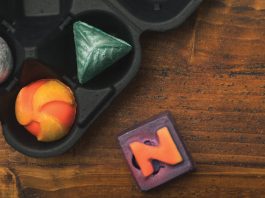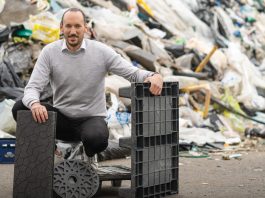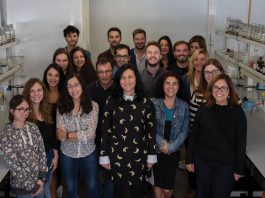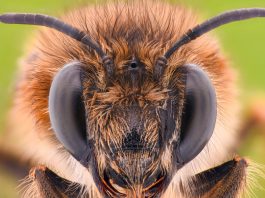A team of scientists from Singapore University of Technology and Design (SUTD) have used the shells of black soldier flies to sustainably extract the biomaterial chitin.
In a paper published in Nature’s Scientific Reports researchers outlined a link between bio inspired manufacturing and urban waste bio conversion, enabling a different mode of production based on materials that are available within any regional ecosystem, significantly reducing the need for transportation.
The study reports successful extraction of chitin from the shells of the Hermetia illucens or black soldier fly using limited energy, easing the largest expense for municipalities all around the world.
Despite the ubiquitous nature of chitin, this polymer is mostly harvested as an industrial and agricultural product. For instance, chitin is mostly available as a seasonal by-product of the fishing industry and is limited to rural coastal areas. This means that chitin would need to rely on the shipping industry, a key contributor to carbon dioxide emissions.
Manufacturing with the world’s most abundant biomaterial
The research team ensured that their developed system was not reliant on the use of the Hermetia illucens or any other unique source of materials since chitin and cellulose are present in a myriad of organisms in every ecosystem on earth.
With annual food waste estimated to be around one-third of the world’s total production, bioconversion via insects is not only gaining popularity as an effective solution to urban waste management, but it also suggests for an emergent paradigm of a circular urban ecology, spanning from material production and manufacturing to end-of-life reclamation.
Manufacturing with the world’s most abundant biological polymers within, or in close proximity to the source of production and consumption may not only allow us to address key deviations arising from our urban way of life but motivate a fundamentally more sustainable economy and society.
“This new development will transform the way we manufacture, enabling an alternative model where materials are produced and consumed using locally available resources. Also, it will allow anyone around the world to adapt and integrate general manufacturing to its surrounding ecosystem,” said Assistant Professor Javier G. Fernandez from SUTD, lead author of the paper.
“Close proximity and deep integration of production and consumption cycles inspired by biology within urban ecosystems may not only influence the way we inhabit the cities of tomorrow, but also upstream envision, design and build them,” added Associate Professor Stylianos Dritsas also from SUTD and co-author of the paper.
Chintin’s biomaterial background
SUTD researchers previously developed a fungus-like adhesive material, also known as FLAM, by effectively transforming chitin and cellulose, into materials for sustainable manufacturing. Derived from the shells of crustaceans and insects, as well as wood and paper, respectively, chitin and cellulose are the two most abundant organic polymers on earth. Touted as a ‘green’ alternative to plastic, FLAM is not only biodegradable, flexible, and durable; it can be mass-produced on a large scale using 3D printing technology.
Do you want the latest news and updates Innovation News Network? Click here to subscribe, and make sure to stay connected with us.












